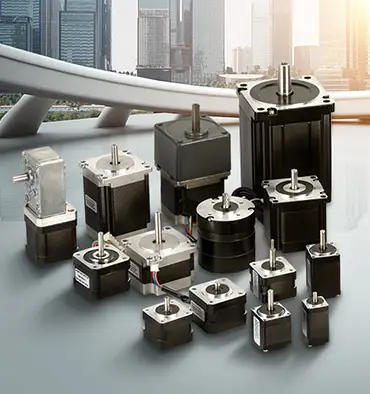Can you run a stepper motor without a driver?
The question of whether a stepper motor can be run without a driver is an important one, as it can have a significant impact on the performance and reliability of the motor. In this article, we will provide a detailed explanation of how stepper motors work, and whether they can be run without a driver. We will also discuss the advantages and disadvantages of running a stepper motor without a driver, and why it may or may not be a good idea.
What is a Stepper Motor?
A stepper motor is an electric motor that rotates in discrete steps, or increments, rather than continuously. This makes it ideal for applications where precise control of the motor's position is necessary, such as in printers, scanners, and other types of precision machinery.
Stepper motors are different from other types of motors in that they have a fixed number of steps per revolution. This means that the motor can only rotate in discrete steps, rather than continuously. For example, a stepper motor with 200 steps per revolution will rotate in 200 equal steps, each corresponding to a 1.8 degree increment of rotation.
Can a Stepper Motor be Run Without a Driver?
Now that we have a basic understanding of how stepper morors work, we can answer the question of whether they can be run without a driver. The short answer is that stepper motors can be run without a driver, but it is not recommended.
This is because stepper motors require a specialized driver in order to function properly. The driver is responsible for providing the electrical signals that control the motor's movement, and without it, the motor will not be able to rotate properly. In order to run a stepper motor without a driver, it would be necessary to create a custom driver, which can be difficult and costly.
Additionally, running a stepper motor without a driver can cause damage to the motor. Stepper motors are designed to be used with a driver, and without one, they may be subject to electrical surges or other forms of damage that can cause them to fail prematurely.
Advantages of Running a Stepper Motor Without a Driver
Despite these challenges, there are some advantages to running a stepper motor without a driver. Some of the main advantages of running a stepper motor without a driver include:
- Cost: Drivers for stepper motors can be expensive, and running a stepper motor without a driver can save money on the initial cost of the motor.
- Customization: Running a stepper motor without a driver allows for more customization of the motor's control signals, which can be useful for certain applications.
Disadvantages of Running a Stepper Motor Without a Driver
Despite these advantages, there are also some significant disadvantages to running a stepper motor without a driver. Some of the main disadvantages of running a stepper motor without a driver include:
- Efficiency: Drivers for stepper motors are designed to provide the most efficient and effective control signals for the motor, and without a driver, the motor may not perform as well.
- Durability: Running a stepper motor without a driver can cause damage to the motor, which can result in reduced lifespan and increased maintenance costs.
- Cost: Creating a custom driver for a stepper motor can be costly and time-consuming, making it a less cost-effective option than using a commercially-available driver.
Conclusion
In conclusion, stepper motors can be run without a driver, but it is not recommended.


Leave a Reply